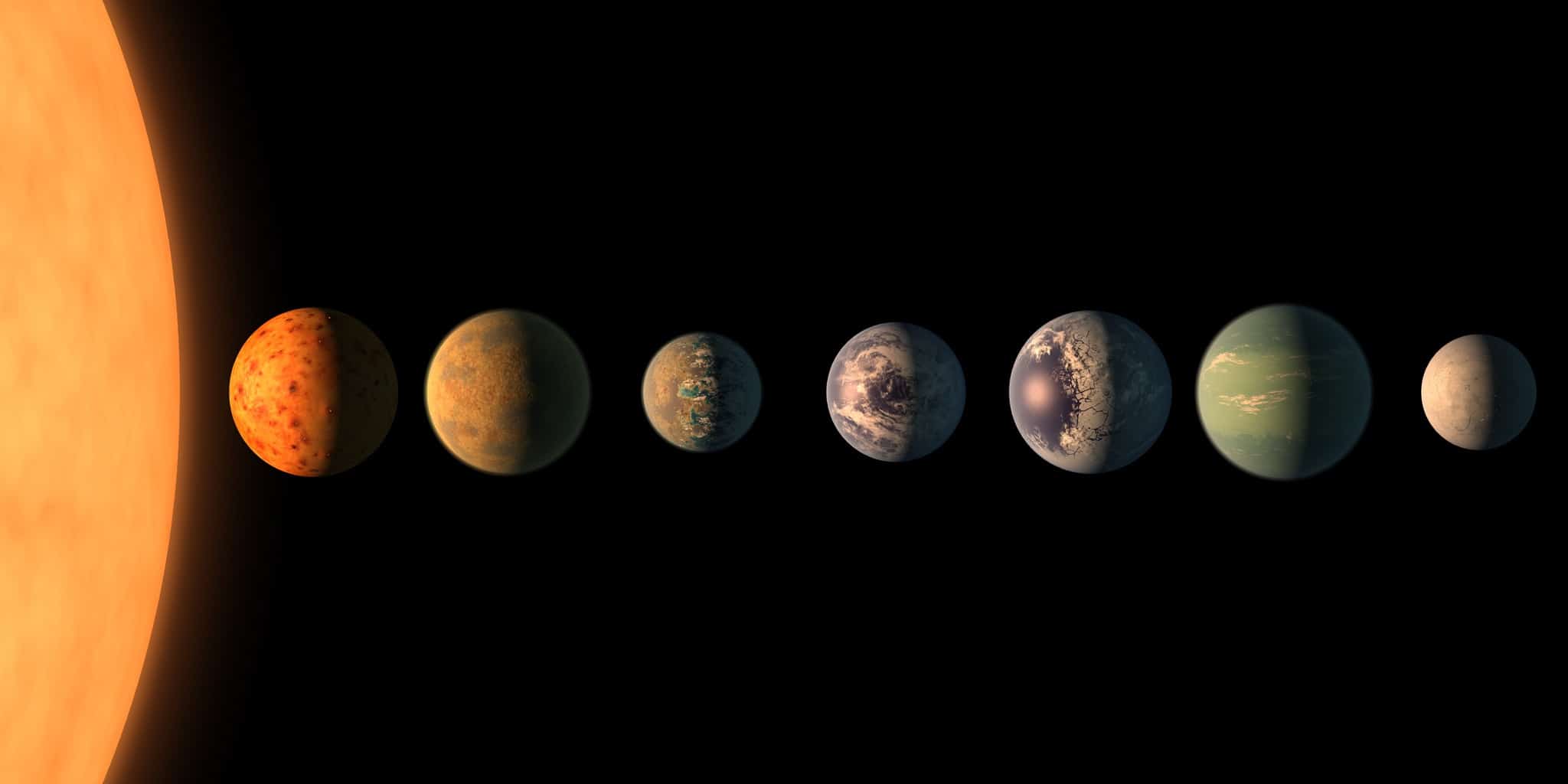Has evidence of life been found in the clouds of Venus?
14 Sep 2020
 Cloudy world: a recently-enhanced image of Venus taken by the Mariner 10 spacecraft. (Courtesy: NASA/JPL-Caltech)
Cloudy world: a recently-enhanced image of Venus taken by the Mariner 10 spacecraft. (Courtesy: NASA/JPL-Caltech)Phosphine, which is a gas produced exclusively by microbes on Earth and considered to be a strong signature of life on other worlds, has been detected in the clouds of Venus. The discovery is perhaps the strongest evidence yet of life beyond Earth.
A team led by Jane Greaves of Cardiff University, UK, observed the phosphine using the James Clerk Maxwell Telescope in Hawaii, before following up with the Atacama Large Millimeter/submillimeter Array (ALMA) in Chile. The gas absorbs radiation from warmer clouds deeper in Venus’ atmosphere, creating an absorption line at 1.1 mm.
The idea to search for phosphine as a biosignature on other worlds is a recent one, developed in 2019 by astronomers led by Clara Sousa-Silva at the Massachusetts Institute of Technology, and independently by Greaves. Phosphine is a molecule derived from phosphorous and is an essential building block of RNA and DNA. On Earth it is produced by anaerobic bacteria, which are microbes that do not require oxygen. They absorb phosphate minerals and combine them with hydrogen, releasing phosphine in the process. Importantly, phosphine is not produced by any known geological process, at least not on Earth.
“In terms of the most distinctive biomarkers [in the solar system] where we can’t find a geological explanation, this is very strong,” Greaves tells Physics World.
A very different planet
Sousa-Silva’s work, which addressed how astronomers might detect phosphine in the atmospheres of Earth-like exoplanets, concluded that the presence of phosphine would act as an iron-clad biomarker since no other process on Earth-like planets is known to produce it. Venus, however, is a different type of planet to Earth. Its surface swelters at an average temperature of 460 °C, and is crushed under an atmospheric pressure of 93 bar – compared to 1 bar on Earth. The planet’s dense atmosphere is almost entirely made of carbon dioxide, laced with clouds of sulphuric acid. It is possible that some unknown chemical reaction in these extreme conditions could be producing the phosphine, but one problem is the lack of hydrogen.
Phosphine is formed from a phosphorous atom bonded to three hydrogen atoms. In the outer solar system, Jupiter and Saturn are able to produce phosphine via a non-biological process. These planets are hydrogen rich, however, and with so much hydrogen available in the high temperatures and pressures deep within their interiors, it is a relatively straightforward process for them to produce phosphine that is then dredged into their upper atmosphere by convection currents.
Venus, on the other hand, has very little hydrogen, having lost it to space long ago, along with most of the planet’s water. Instead, Venus is carbon rich. Without free hydrogen, it is difficult to conceive of a non-biological process to create phosphine. Furthermore, even if some geological reaction were taking place, adding all the possible sources such as volcanoes and the existence of favourable minerals, it would still come in at ten-thousand times short of the observed phosphine abundance, which is 20 parts-per-billion.
No known geological process
“That doesn’t mean that the biological origin is the correct idea,” says Greaves. “It just means that we can’t find a really viable geological process.”
There is little previous evidence for phosphorous, too, on Venus, the only other detection having been made by the Soviet Union’s Vega 2 lander in 1985.
“This new detection of phosphine is significant because it suggests the widespread presence of phosphorous in Venus’ clouds,” says Sanjay Limaye, who is an atmospheric physicist from the University of Wisconsin, Madison, but who was not involved in the phosphine discovery. Limaye is a former chair of NASA’s Venus Exploration Analysis Group.
Scientists have speculated about the existence of microbial life in Venus’ clouds, attributing said life to unidentified ultraviolet-absorbing particles present within the planet’s atmosphere. These particles are currently being mapped by the Japanese Aerospace Exploration Agency’s Akatsuki orbiter.
Venusian habitable zone
Despite Venus’ generally hellish conditions, some regions of the planet are more clement than others. “The altitude that we probed is the top end of what is sometimes called the Venusian habitable zone,” says Greaves. This extends about 47–60 km above the surface, where temperatures range between 0 and 100 °C and atmospheric pressures average about 1 bar. However, the clouds also pose a hazard to life: it is not clear how microbes could survive in conditions that are 95% sulphuric acid.
More observations are required, says Limaye: “Confirmation of the presence of phosphine by other means is very much needed.”
It has been suggested that future missions to Venus could incorporate balloons or winged craft that could explore this potentially habitable region of the atmosphere. In the meantime, NASA is considering two future missions to Venus: VERITAS, which will study the planet from orbit, observing primarily with a synthetic aperture radar; and DAVINCI+, which will be a probe that will dive through Venus’ atmosphere.
Toxic gases in habitable zone could hinder emergence of alien life
“The radar should be able to provide some clues about the presence of liquid water on the surface in the past, while more crucially, the probe may be able to sample the cloud composition and search for the presence of phosphine,” says Limaye.
If the phosphine does prove to be biological in origin, it would mean that, surprisingly, Venus would be the first planet beyond Earth to be found to harbour life. Given its considerably harsh conditions, it would throw the idea of the habitable zone wide open.
The detection of phosphine is described in Nature Astronomy.
FROM PHYSICSWORLD.COM 18/9/2020

Δεν υπάρχουν σχόλια:
Δημοσίευση σχολίου